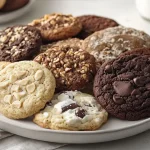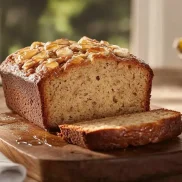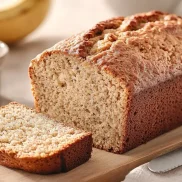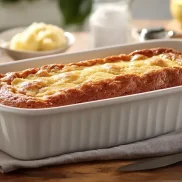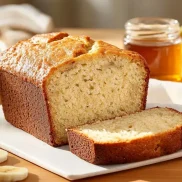What happens when you use gluten-free flour in cookies? This question is at the heart of gluten-free baking, as using alternative flours can completely transform your cookie-making experience. Cookies are a universal favorite, but baking them with gluten-free flour opens up a whole new world of possibilities. Whether you’re catering to dietary restrictions, exploring new flavors, or simply curious about alternative baking, gluten-free flour presents unique challenges and opportunities. For a delightful example, check out this gluten free sugar cookie recipe. This introduction will guide you through the basics of gluten-free flour, the types available, and why these options are worth considering for your next batch of cookies.
Table of Contents
What Is Gluten-Free Flour?
Gluten-free flour is a versatile alternative to traditional wheat flour, crafted to meet the needs of individuals with gluten sensitivities or those following a gluten-free diet. Unlike conventional flour, which contains gluten — a protein responsible for elasticity and structure in baked goods — gluten-free flour is made from a variety of grains, nuts, and other plant-based ingredients. It is specially designed to mimic the properties of wheat flour without triggering gluten-related health issues.
This flour can come in single-ingredient varieties or as blends tailored for specific baking applications. While the absence of gluten can pose challenges in achieving the same texture and structure as wheat-based recipes, modern formulations and techniques have made gluten-free baking more accessible and enjoyable than ever. Gluten-free flour can be used to create cookies, cakes, bread, and more, providing a delicious way for everyone to enjoy baked treats without compromise.
Common Types of Gluten-Free Flours
When diving into gluten-free baking, understanding the types of gluten-free flours is key to achieving great results. Each flour has unique properties that affect the texture, flavor, and moisture content of your baked goods. Below are some common types:
- Rice Flour: A popular choice, rice flour has a mild flavor and fine texture, making it suitable for cookies and cakes. It’s often combined with other flours to improve consistency.
- Almond Flour: Made from finely ground almonds, this flour adds a rich, nutty flavor and moist texture. It’s high in protein and healthy fats, making it a nutritious option.
- Tapioca Flour: Derived from cassava roots, tapioca flour is a starchy option that enhances chewiness and provides binding. It’s commonly used in blends to mimic gluten’s elasticity.
- Coconut Flour: This flour is known for its high absorbency and subtle coconut flavor. It requires more liquid in recipes to counteract its drying effects.
- Chickpea Flour: Also called gram flour, it’s a protein-rich option with a slightly earthy flavor, often used in savory and sweet baked goods.
Each of these flours can be used individually or in combination to achieve the desired taste and texture, especially in cookies.
Why Choose Gluten-Free Options for Cookies?
Choosing gluten-free flour for cookies can be a game-changer for various reasons. For individuals with celiac disease or non-celiac gluten sensitivity, it’s a necessity. Consuming gluten in such cases can lead to digestive discomfort, fatigue, and other health issues. However, even those without gluten-related conditions are exploring gluten-free baking for its potential health benefits and culinary creativity.
Gluten-free cookies often showcase a wider range of flavors, thanks to the unique characteristics of alternative flours. For example, almond flour’s nuttiness or coconut flour’s subtle sweetness can add depth and dimension to classic cookie recipes. Additionally, gluten-free baking introduces a diverse array of nutrients. Many gluten-free flours are naturally high in fiber, protein, and essential vitamins, making your sweet treats a little healthier.
Moreover, gluten-free cookies cater to the growing demand for inclusive baking. Whether you’re hosting a party or accommodating a loved one’s dietary preferences, gluten-free cookies ensure everyone can indulge without worry. With the right techniques and ingredient combinations, these cookies can rival their wheat-based counterparts in taste and texture, proving that going gluten-free doesn’t mean sacrificing quality or flavor.
The Role of Gluten in Traditional Cookies
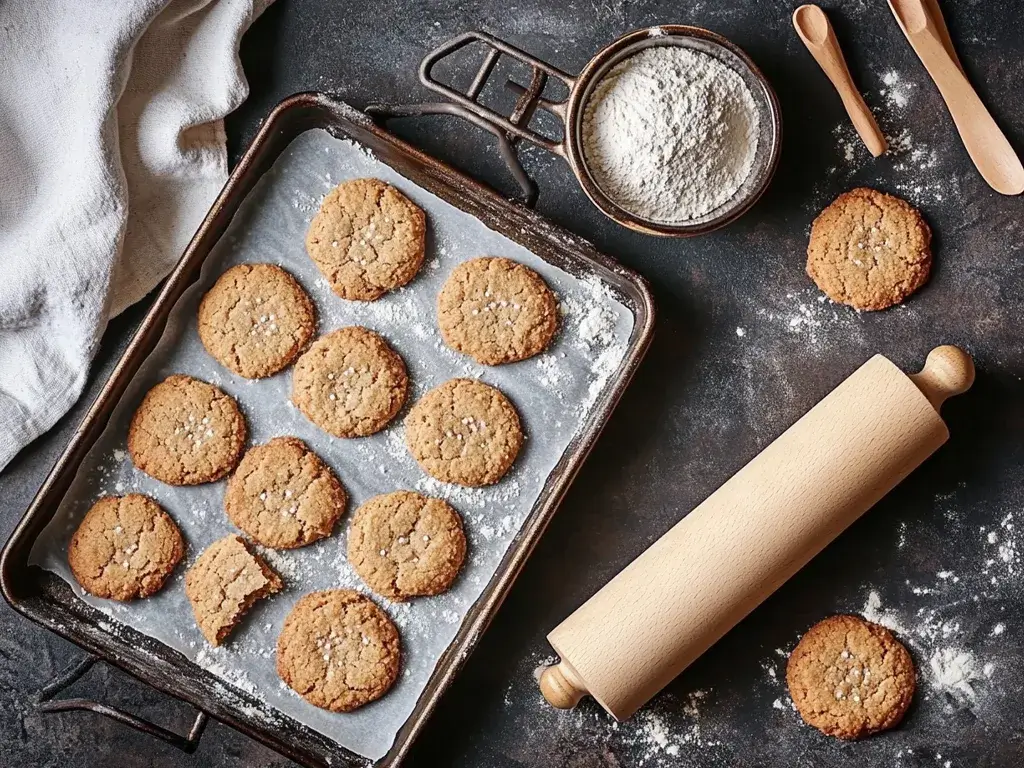
Gluten plays a pivotal role in the structure and texture of traditional cookies. Found in wheat flour, gluten is a protein made up of two components: glutenin and gliadin. When mixed with water, these proteins form a network that gives dough its elasticity, strength, and structure. This network is essential in creating cookies that are chewy, soft, or crisp, depending on the recipe. Understanding gluten’s properties helps bakers appreciate why cookies made with gluten-free flour often behave differently.
How Gluten Affects Cookie Texture and Structure
In traditional baking, gluten is responsible for holding the dough together and influencing the final texture of cookies. Here’s how it works:
- Elasticity: Gluten acts as a binding agent, creating an elastic web that traps air during the mixing and baking process. This elasticity is crucial for achieving chewy cookies, as it helps retain moisture and gives the cookies their characteristic stretchiness.
- Structure: As gluten develops, it provides structure to the dough, ensuring the cookies maintain their shape during baking. Without it, the dough can become too crumbly, leading to cookies that fall apart.
- Texture Control: The amount of gluten development can be adjusted to achieve different textures. For instance, minimal mixing results in tender, soft cookies, while thorough mixing produces chewier cookies with a denser texture.
- Even Spread: Gluten helps control the spread of cookies on the baking sheet. Too little gluten can result in cookies spreading too thin, while too much can prevent them from spreading at all.
The balance of gluten development is key to creating cookies that are visually appealing and delightful to eat.
Elasticity and Binding Properties of Gluten
The unique elasticity and binding properties of gluten are what set wheat-based cookies apart. When flour is hydrated, glutenin provides elasticity, while gliadin contributes to extensibility. Together, they form a cohesive dough that can stretch without breaking. This property is vital for:
- Dough Formation: The elasticity of gluten allows the dough to be rolled, shaped, and handled without falling apart.
- Retention of Ingredients: Gluten binds ingredients like sugar, butter, and eggs, ensuring an even distribution of flavors and textures throughout the cookie.
- Chewiness: For cookies like chocolate chip or oatmeal, the gluten web creates a satisfying chew that many people associate with traditional baking.
These properties explain why substitutes for gluten, such as xanthan gum or psyllium husk, are often used in gluten-free baking. These substitutes mimic gluten’s role to a degree, but achieving the same level of elasticity and binding can be challenging.
In summary, gluten is the backbone of traditional cookie baking. It influences everything from texture to structure, making it a vital component for classic recipes. While gluten-free alternatives require adjustments, understanding gluten’s role can help bakers recreate the magic of traditional cookies in a gluten-free format.
What Happens When You Use Gluten-Free Flour in Cookies? Effects on Texture and Taste
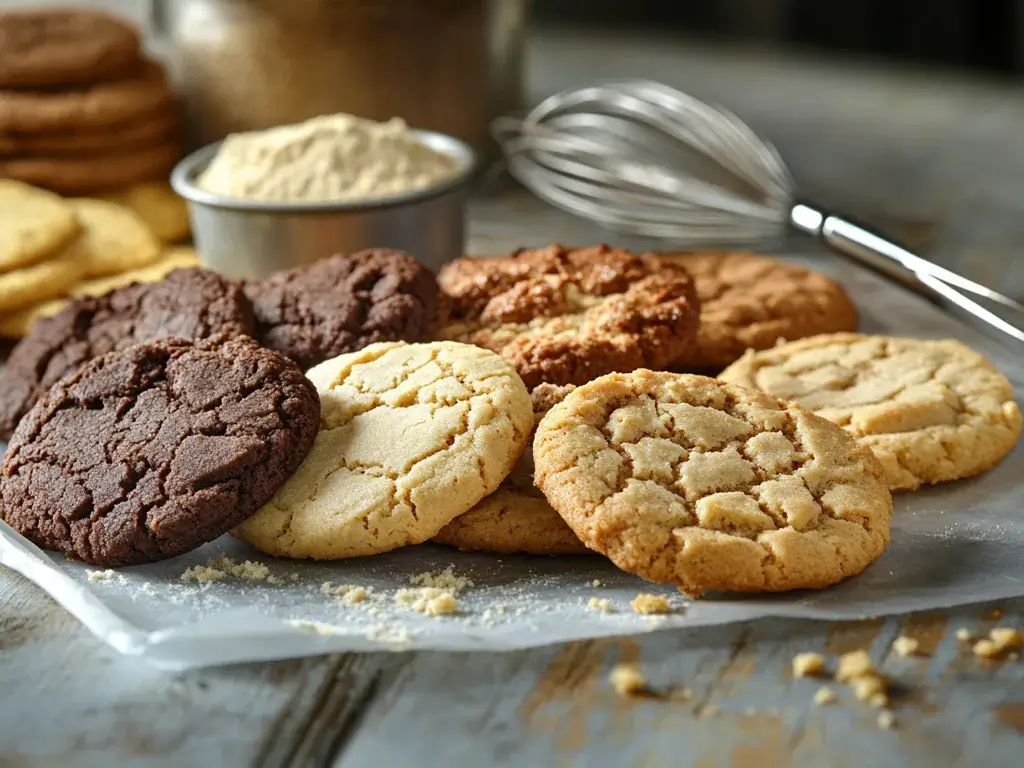
When substituting gluten-free flour for traditional wheat flour in cookie recipes, the results can be strikingly different. Gluten-free baking often requires a blend of unique flours and additional adjustments to achieve a balance of texture, flavor, and structure. These changes can transform cookies in various ways, presenting both challenges and opportunities for bakers.
Texture: From Chewy to Crumbly
One of the most noticeable effects of using gluten-free flour is the change in texture. Without gluten’s binding and elastic properties, cookies can become crumbly or fragile. While traditional cookies often have a chewy or soft bite, gluten-free versions may:
- Feel drier or denser.
- Break apart more easily.
- Lack the stretchiness associated with gluten.
To combat these issues, bakers often incorporate binding agents like xanthan gum or guar gum into gluten-free recipes. These ingredients help mimic gluten’s elasticity, giving cookies a more cohesive structure and preventing them from falling apart.
Flavor Profile Changes
Gluten-free flours bring their own unique flavors to cookies, which can enhance or alter the final taste. For instance:
- Almond flour lends a nutty richness that complements chocolate or fruit flavors.
- Coconut flour adds a subtle sweetness, pairing well with vanilla or tropical ingredients.
- Rice flour provides a neutral taste, allowing other ingredients to shine.
However, some gluten-free flours, such as chickpea flour, may impart a stronger, more distinctive flavor that might not suit all recipes. Selecting the right flour blend is crucial to achieving the desired taste.
Impact on Baking Time and Temperature
Gluten-free cookie recipes often require adjustments to baking time and temperature. These flours absorb liquids differently and can brown more quickly, so bakers may need to:
- Reduce baking temperature slightly to prevent over-browning.
- Monitor cookies closely to avoid dryness.
- Experiment with baking times to find the sweet spot for a soft or crisp texture.
Additionally, gluten-free doughs often spread differently on the baking sheet, which can influence cookie shape and uniformity.
Differences in Dough Handling
Working with gluten-free cookie dough can feel different compared to traditional recipes. The absence of gluten changes the dough’s elasticity and cohesiveness. Here’s what bakers might notice:
- Stickiness: Gluten-free doughs are often stickier and harder to handle. Chilling the dough before shaping can make it easier to work with.
- Cracking: The dough may crack more easily when rolled or pressed, requiring gentle handling.
- Spread Control: Gluten-free cookies may spread less or more than expected, depending on the flour blend and recipe adjustments.
To improve the baking process, bakers often use parchment paper or silicone mats to prevent sticking and maintain consistent results.
In conclusion, using gluten-free flour in cookies involves more than a simple ingredient swap. It’s an art that requires an understanding of texture, flavor, and baking science. With the right techniques and ingredients, gluten-free cookies can rival their traditional counterparts, offering delicious treats that cater to a wide range of dietary needs and preferences.
Tips for Baking Cookies with Gluten-Free Flour

Baking cookies with gluten-free flour may seem challenging at first, but with the right techniques, it can be a rewarding experience. Gluten-free flours require slight adjustments to ensure your cookies turn out just as delightful as their wheat-based counterparts. Here are some practical tips to guide you.
Mixing Techniques for Better Results
When working with gluten-free flours, mixing the dough correctly is essential to achieve the desired texture and consistency. Unlike wheat flour, gluten-free alternatives don’t form the same protein networks, so the mixing process must compensate:
- Blend Thoroughly: Ensure all ingredients are evenly incorporated to avoid pockets of dry flour or uneven textures.
- Don’t Overmix: While gluten development isn’t a concern, overmixing can still affect the texture. Mix until just combined to maintain the structure.
- Rest the Dough: Allow the dough to rest for 20–30 minutes before baking. This step lets the flour fully hydrate, improving the cookie’s texture and preventing grittiness.
Using these techniques ensures a smoother dough and a more consistent bake.
Adding Binding Agents (e.g., Xanthan Gum)
Binding agents play a crucial role in gluten-free baking. They mimic the elasticity and structure provided by gluten, ensuring your cookies hold together and achieve a desirable texture. Common options include:
- Xanthan Gum: Add 1/4 to 1/2 teaspoon per cup of gluten-free flour to improve elasticity and binding.
- Guar Gum: Similar to xanthan gum, it works well for cookies but is slightly softer in texture.
- Chia or Flaxseed Gel: Mix 1 tablespoon of ground seeds with 3 tablespoons of water for a natural, plant-based binder.
Experiment with these agents to find the one that best suits your recipe and taste preferences.
Adjusting Liquid Ratios
Gluten-free flours absorb liquids differently than wheat flour, often requiring adjustments to the liquid content of your recipes. Here’s how to tackle this:
- Increase Liquids Gradually: Start with the recommended amount and add small amounts of water, milk, or other liquids as needed until the dough reaches the right consistency.
- Account for High Absorbency: Flours like coconut or chickpea absorb more moisture. Use less of these flours or balance them with higher-moisture ingredients.
- Monitor Consistency: The dough should be slightly softer than wheat-based doughs to ensure the cookies don’t turn out dry or crumbly.
Making these adjustments ensures your cookies stay moist and hold their shape during baking.
With these tips, baking gluten-free cookies becomes less of a guessing game and more of an enjoyable process. By mastering mixing techniques, incorporating binding agents, and adjusting liquid ratios, you’ll create cookies that are as delicious and satisfying as their traditional counterparts.
Troubleshooting Common Issues
Baking gluten-free cookies can be a rewarding experience, but it’s not without its challenges. From crumbly textures to gritty mouthfeels, some common issues can arise when using gluten-free flour. Understanding these problems and their solutions is key to perfecting your gluten-free cookie recipes.
Why Do Gluten-Free Cookies Crumble?
One of the most frequent complaints with gluten-free cookies is their tendency to crumble. This issue stems from the lack of gluten, which acts as a binding agent in traditional baking. Without it, the structure of the cookies can weaken, making them prone to breaking apart.
Causes:
- Insufficient Binding Agents: Gluten-free flours need additional binders, like xanthan gum or guar gum, to hold the dough together.
- Incorrect Flour Ratios: Using too much of certain gluten-free flours, like rice or coconut, can lead to a brittle texture.
- Overbaking: Baking for too long can dry out the cookies, exacerbating the crumbling issue.
Solutions:
- Incorporate a Binding Agent: Add 1/4 to 1/2 teaspoon of xanthan gum per cup of flour to enhance elasticity.
- Combine Flours: Use a blend of gluten-free flours to balance textures. For example, mixing almond flour with tapioca flour can improve cohesiveness.
- Reduce Baking Time: Keep a close eye on the oven and remove cookies as soon as the edges are lightly browned.
- Chill the Dough: Allowing the dough to rest in the fridge for 20–30 minutes helps improve its structure and reduces crumbling during baking.
How to Fix Dry or Gritty Textures
Another common challenge in gluten-free baking is achieving a smooth and moist texture. Grittiness and dryness often occur due to the unique properties of gluten-free flours, which can absorb liquids differently.
Causes:
- Insufficient Hydration: Some gluten-free flours, like coconut or rice flour, require more liquid to fully hydrate.
- Improper Mixing: Failing to mix the dough thoroughly can leave gritty pockets of flour.
- Overuse of High-Absorbency Flours: Using too much coconut or chickpea flour can result in dryness.
Solutions:
- Increase Liquid Content: Add a tablespoon of milk, water, or even applesauce at a time until the dough feels pliable and moist.
- Hydrate the Dough: Let the dough rest before baking to allow the flour to absorb moisture fully.
- Use a Flour Blend: Mixing flours with different absorbency levels, such as pairing almond flour with tapioca starch, can balance texture.
- Add Fat: Incorporate extra butter or oil to enhance moisture and richness.
By identifying the root causes of these issues and applying these fixes, you can overcome the challenges of gluten-free baking and create cookies that are both flavorful and structurally sound.
Frequently Asked Questions
What flour is best for gluten-free cookies?
The best flour for gluten-free cookies depends on your desired texture and flavor. Blends of flours, such as almond flour, tapioca flour, and rice flour, often yield the best results. Pre-made gluten-free flour mixes are also a convenient choice as they’re designed to mimic wheat flour. For softer cookies, almond flour is a great choice, while rice flour provides a more neutral base. Learn more
How do you keep gluten-free cookies from falling apart?
To prevent gluten-free cookies from falling apart, incorporate binding agents like xanthan gum, guar gum, or chia seed gel. Resting the dough before baking also helps strengthen its structure. Additionally, using a mix of gluten-free flours and avoiding overbaking can improve cohesiveness. Learn more
Why are my gluten-free cookies gritty?
Grittiness often comes from underhydrated dough or the use of coarse-textured flours like rice flour. Letting the dough rest for 20–30 minutes can help the flour absorb liquids, reducing grittiness. Opting for finer-ground flours can also improve the texture.
Can I substitute gluten-free flour 1:1 in cookie recipes?
While some gluten-free flour blends claim to be 1:1 substitutes, results can vary. Gluten-free doughs often require more liquid or binding agents. Adjust the recipe as needed to achieve the desired consistency and structure.
Are gluten-free cookies healthier than regular cookies?
Gluten-free cookies aren’t necessarily healthier. While some gluten-free flours are rich in nutrients like protein and fiber, others may contain more starch and calories. The overall healthiness depends on the ingredients used.
What is the secret to making good gluten-free cookies?
The secret lies in using the right flour blend, incorporating binding agents, and carefully managing liquid ratios. Letting the dough rest before baking and experimenting with flavors can also elevate your cookies. Practice and patience are key to mastering gluten-free baking.
Conclusion
Baking cookies with gluten-free flour can be a delightful adventure. While it requires adjustments to accommodate the unique properties of alternative flours, the results can be just as satisfying as traditional cookies. From understanding the role of gluten to choosing the right flour blend and troubleshooting common issues, every step is an opportunity to learn and improve.
With practice, patience, and the tips shared in this article, you’ll be well-equipped to create gluten-free cookies that are not only delicious but also tailored to a variety of dietary needs. Whether you’re baking for someone with gluten sensitivities or simply exploring new culinary horizons, the effort is well worth it. So, gather your ingredients, preheat your oven, and embark on the rewarding journey of gluten-free cookie baking!

